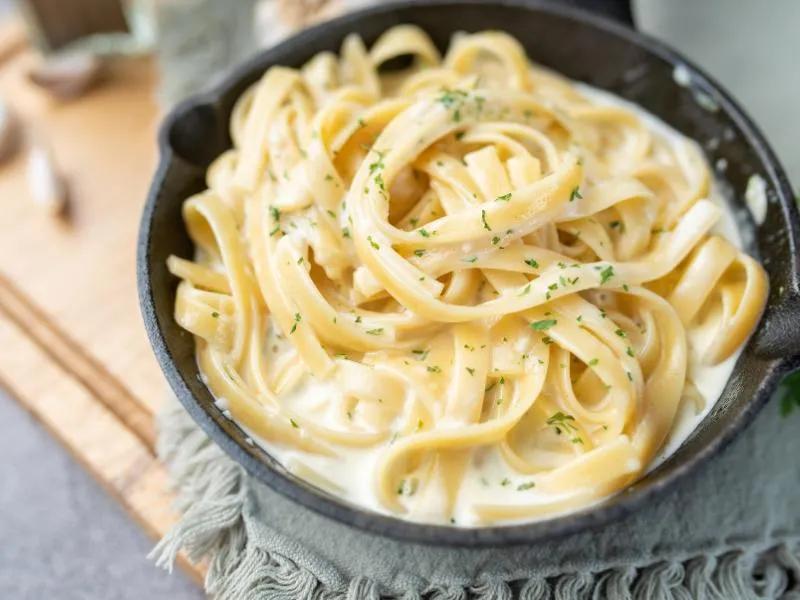Fettuccine Alfredo
Fresh pasta ribbons tossed with butter and Parmigiano-Reggiano creating a silky, creamy sauce.
👉 View Authentic Recipe 👈
About This Dish
Fettuccine Alfredo originated in 1920s Rome at Alfredo Di Lelio’s restaurant, where he created it as a simple dish to help his wife regain strength after childbirth. This iconic Roman pasta, originally called “fettuccine al triplo burro” (fettuccine with triple butter), consists of just three ingredients: fresh egg fettuccine, high-quality butter, and aged Parmigiano-Reggiano cheese.
Unlike the American adaptation that incorporates heavy cream and various additions, authentic Italian Fettuccine Alfredo relies on the emulsion of starchy pasta water with butter and cheese to create its signature silky sauce. The technique of vigorously tossing hot pasta with butter and cheese (mantecatura) is what creates the creamy consistency without any actual cream.
In Italy, Fettuccine Alfredo remains relatively uncommon outside Rome and is considered more of a specialty dish rather than an everyday staple. The dish gained international fame when Hollywood celebrities Mary Pickford and Douglas Fairbanks dined at Alfredo’s restaurant in the 1920s and brought the recipe back to the United States, where it evolved into the creamy version most Americans know today.
🧑🍳 Analyzed by CucinaBot
Why This Dish Works
The magic of authentic Fettuccine Alfredo lies in its beautiful simplicity. The starch molecules released by the pasta during cooking act as natural emulsifiers, allowing the butter fat and water to combine into a silky sauce. Meanwhile, the proteins in the Parmigiano-Reggiano add both flavor (through glutamates) and structure as they partially melt. This creates a perfect balance of richness without heaviness, where each component enhances the others.
Key Success Factors
- Fresh Pasta: Essential for proper starch release and texture; dried pasta doesn’t achieve the same silky result
- Pasta Water Retention: Reserve enough starchy cooking water to create the proper emulsion
- Temperature Control: Work quickly while pasta is hot to properly melt butter and cheese without separation
- Continuous Tossing: The vigorous mantecatura technique creates the emulsion and coats each strand evenly
Common Pitfalls
The most common misconception is that Fettuccine Alfredo requires cream. This American adaptation, while delicious in its own right, is fundamentally different from the authentic Roman dish. Many recipes also fail by using pre-grated cheese (which contains anti-caking agents that prevent proper melting) or by not working quickly enough while the pasta is hot, resulting in a clumpy rather than silky sauce.
How to Judge Authenticity
When reviewing recipes, look for these markers of authenticity:
- Contains only three ingredients: fettuccine, butter, and Parmigiano-Reggiano
- No cream in the ingredient list
- Emphasizes the importance of using pasta cooking water
- Mentions the mantecatura technique (vigorously tossing or swirling pasta)
- Calls for freshly grated cheese, not pre-packaged